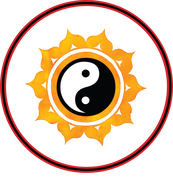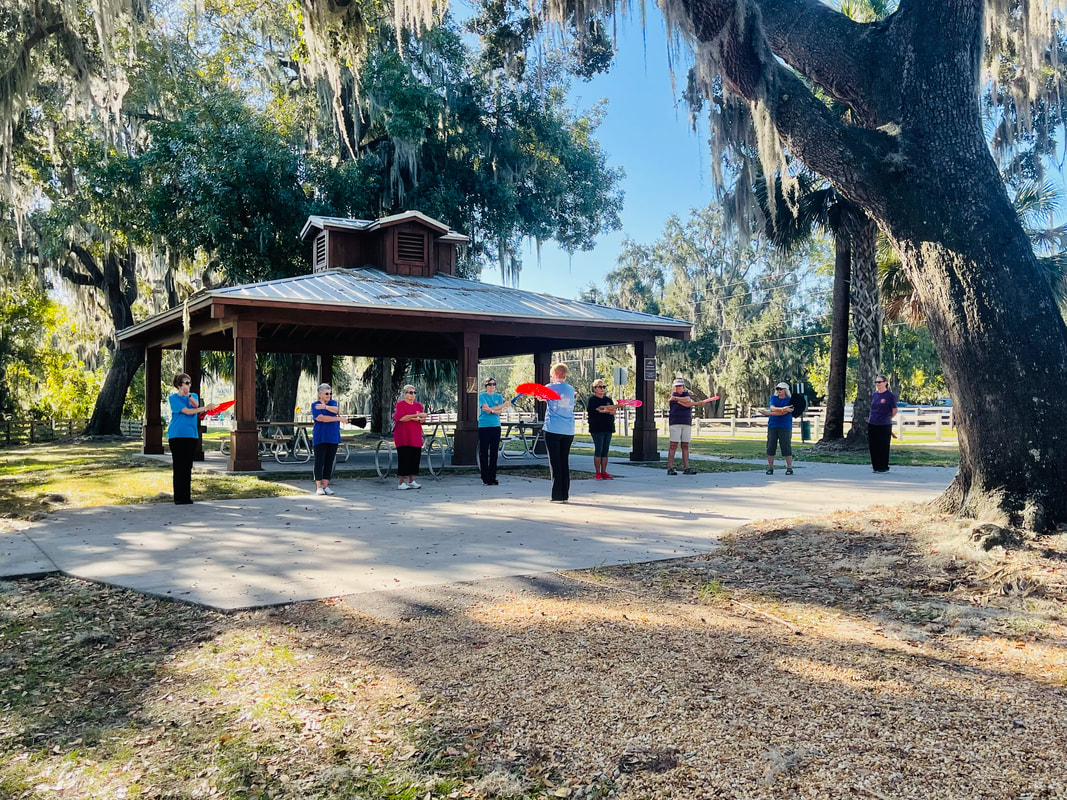WELCOME to Tai Chi Clermont!
Are you interested in learning more about this ancient practice proven to reduce pain and improve your mental and physical well-being? Great, keep reading to learn more about Tai Chi, QiGong and more!
What is Tai Chi (Taiji - Pronounced "tie" and "gee" Like "gee whiz")
It means Grand Ultimate, and originated in ancient China, it's one of the most effective exercises for the health of mind and body. Tai chi is a soft martial art, meaning participants learn to react to external forces by yielding to and redirecting force to gain control. Many tai chi forms are derived from observing nature and understanding the balance of motion, which can be seen in the way movement control and postural awareness during weight transfer are incorporated into the forms.
What is QiGong | Pronounced "Chee" "Gung"
An ancient Chinese art of energy cultivation. Qi is the life energy inside a person that circulates throughout the body to provide inner strength and maintain good health. Gong is a method of exercise in this context. So, QiGong is an exercise which cultivates better and stronger Qi. The stronger Qi you have, the healthier and stronger you are.
When Tai Chi is practiced, three components are working together: movements, meditation and deep breathing. The movements are a series of gentle postures flowing slowly and smoothly from one to another.
What is Tai Chi (Taiji - Pronounced "tie" and "gee" Like "gee whiz")
It means Grand Ultimate, and originated in ancient China, it's one of the most effective exercises for the health of mind and body. Tai chi is a soft martial art, meaning participants learn to react to external forces by yielding to and redirecting force to gain control. Many tai chi forms are derived from observing nature and understanding the balance of motion, which can be seen in the way movement control and postural awareness during weight transfer are incorporated into the forms.
What is QiGong | Pronounced "Chee" "Gung"
An ancient Chinese art of energy cultivation. Qi is the life energy inside a person that circulates throughout the body to provide inner strength and maintain good health. Gong is a method of exercise in this context. So, QiGong is an exercise which cultivates better and stronger Qi. The stronger Qi you have, the healthier and stronger you are.
When Tai Chi is practiced, three components are working together: movements, meditation and deep breathing. The movements are a series of gentle postures flowing slowly and smoothly from one to another.
|
Benefits of Tai Chi with ongoing practice:
|

- Tai Chi: A Journey Through Five Styles
(In our classes, you will find Sun, Yang and Chen Style)
- Chen Style: The oldest of the Tai Chi styles, Chen style is known for its whole-body twining and coiling movements, generating spiral force and allowing for explosive releases of power. It is rich in combat techniques.
- Yang Style: Characterized by slow, gentle, and fluid movements, Yang style promotes grounding and rootedness. It is considered easier to learn and has gained popularity in modern times for its health benefits.
- Sun Style: Sun style is marked by high, upright postures and compactness of movement. It features flexible stepping, where one foot follows or "taps down" for balance when the other foot moves forward or backward. The addition of Qigong exercise during movement change is a unique feature of this style.
- Wu Style: Wu style is known for its quietness and moderate postures. It emphasizes deep rooting or anchoring in steps and is characterized by its softness. The style focuses on redirecting incoming force and tends to have a slightly forward-leaning posture.
- Hao/Wu Style: The Hao/Wu style, though not as well-known, is characterized by small foot movements, high and short stances, and precise hand positions.
SIX ESSENTIAL TAI CHI PRINCIPLES
At the core of all tai chi are the Six Essential Tai Chi Principles. No matter what style and what aspects of tai chi if the principles are adhered – the unique tai chi effect and health benefit will come. True tai chi movements are ones that incorporate tai chi principles.
Outward Movement
- Slow, smooth Continuous – Make your movements continuous, like water flowing in a river.
- Resistance –Imagine you are moving against a gentle resistance – like moving in water.
3. Posture – Golden Thread holds your head to the sky, your knees slightly bent, your chin tucked in, and
your pelvis tucked under. Your ear, shoulder, hip should align.
4. Weight transference – Be aware when you transfer your weight, be aware of each step of your weight
transference. This is important mobility, coordination, and stability.
Internal Movement
5. Song (relax open) - Relax open your joints, gently stretching them from within. Think of internally
expanding each joint.
6. Jing (focus) - Pay attention to your body and the movements you are making. Be aware of your
surroundings but focus on what you are doing.
|
Tai Chi in the Park on April 6, 2024
Video of our March 23, 2024, Tai Chi in the Park. Listen with sound. We had such a wonderful time.
|
Video above: Our 2024 World Tai Chi & QiGong Day Celebration in Lake Hiawatha Preserve in Clermont, Florida was a huge success. A record number joined us this year! Around 100 participants came out to practice, a perfect day in nature. At 10am we enjoyed creating a wave of healing energy encircling the world as we practiced Tai Chi with the thousands of others at the same time. Mini-sessions, demonstrations, picnic, and lots of fun meeting new people!
|

PLUS, Tai Chi is FUN, and a great way to meet NEW friends!!
If you're looking for stress reduction & relaxation; and team building for your company or group, Tai Chi and QiGong can be a wonderful activity to add for your staff, group members and the community.
Contact Sonya for more information.
If you're looking for stress reduction & relaxation; and team building for your company or group, Tai Chi and QiGong can be a wonderful activity to add for your staff, group members and the community.
Contact Sonya for more information.
"Tai Chi is often described as meditation in motion, but it might well be called "medication in motion." There's growing evidence that this mind-body practice has value in treating or preventing many health problems." - Harvard Medical Health Publication



